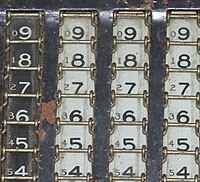Method of complements

The method of complements is like a special trick that can be used to do subtraction quickly by using addition instead.
Imagine you have some apples in a basket. Let's say you have 10 apples, but you want to take away 7 apples. If you count out 7 apples and take them away, you'll be left with 3 apples.
But with the method of complements, you can do it in a different way. Instead of counting out 7 apples, you can count out how many apples you need to add to make the total 10. In this case, you need to add 3 apples to make 10. So, the complement of 7 is 3.
Now, instead of taking away 7 apples from 10, you can add the complement of 7 (which is 3) to 10. This will give you the same answer as before - 3.
So, the method of complements is a way to convert subtraction problems into addition problems by finding the complement of the number you want to subtract. The complement is the amount you need to add to get to the nearest "10" (in our example it was 10 apples). Then you add the complement to the number you are subtracting from (in our example it was 10 apples), and you get the answer to the subtraction problem.
This method is really helpful in doing quick calculations, especially when dealing with large numbers. But it's important to remember to convert the numbers to their complements correctly, or you might end up with the wrong answer!
Imagine you have some apples in a basket. Let's say you have 10 apples, but you want to take away 7 apples. If you count out 7 apples and take them away, you'll be left with 3 apples.
But with the method of complements, you can do it in a different way. Instead of counting out 7 apples, you can count out how many apples you need to add to make the total 10. In this case, you need to add 3 apples to make 10. So, the complement of 7 is 3.
Now, instead of taking away 7 apples from 10, you can add the complement of 7 (which is 3) to 10. This will give you the same answer as before - 3.
So, the method of complements is a way to convert subtraction problems into addition problems by finding the complement of the number you want to subtract. The complement is the amount you need to add to get to the nearest "10" (in our example it was 10 apples). Then you add the complement to the number you are subtracting from (in our example it was 10 apples), and you get the answer to the subtraction problem.
This method is really helpful in doing quick calculations, especially when dealing with large numbers. But it's important to remember to convert the numbers to their complements correctly, or you might end up with the wrong answer!
Related topics others have asked about:
